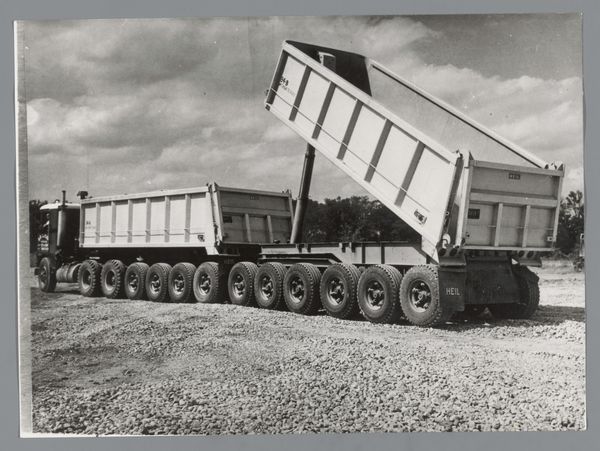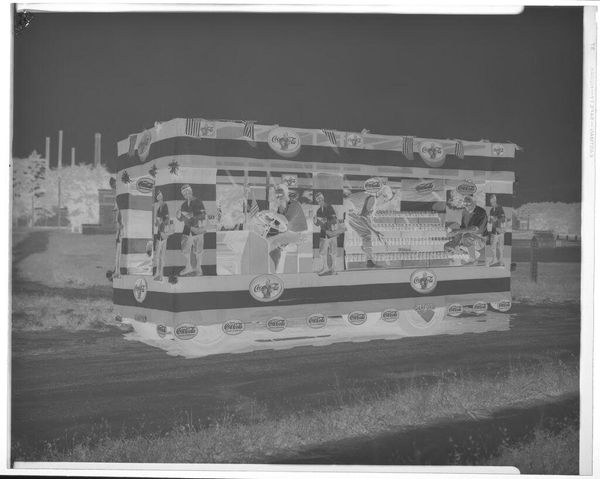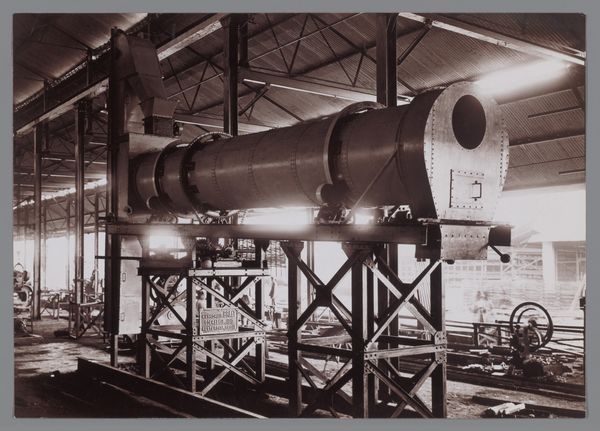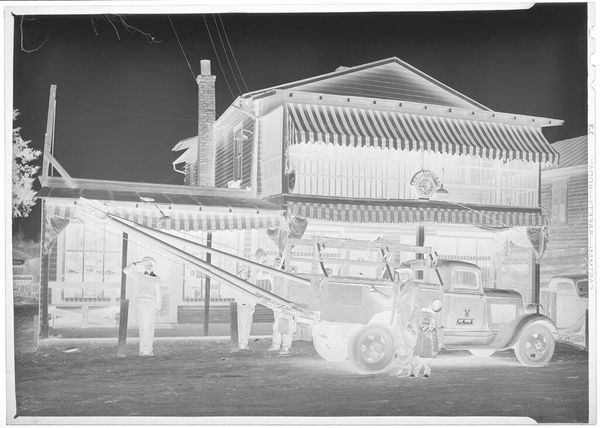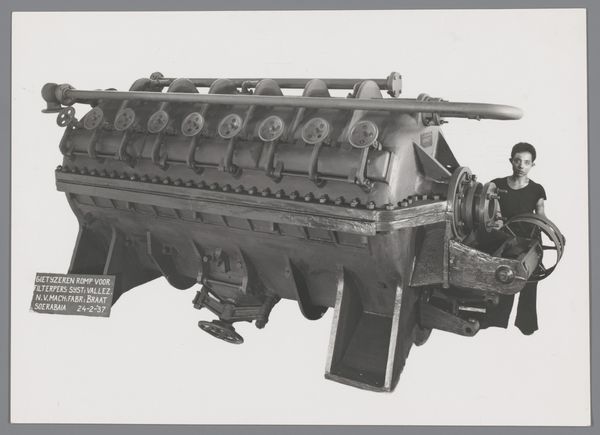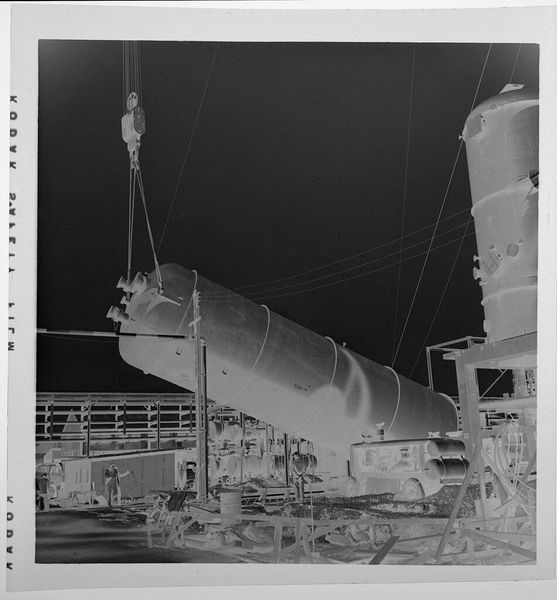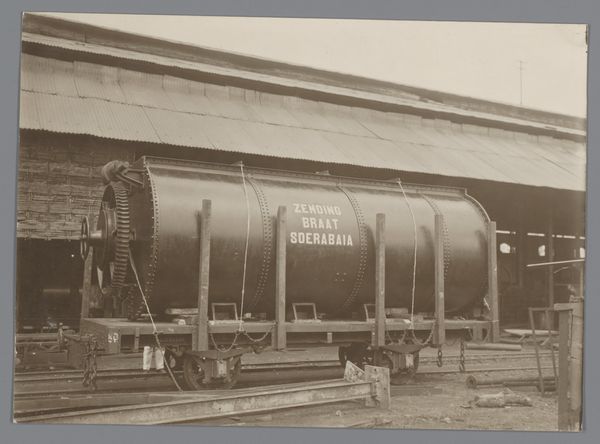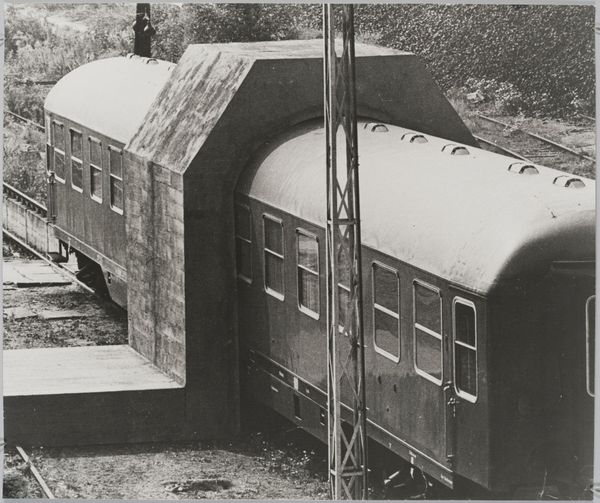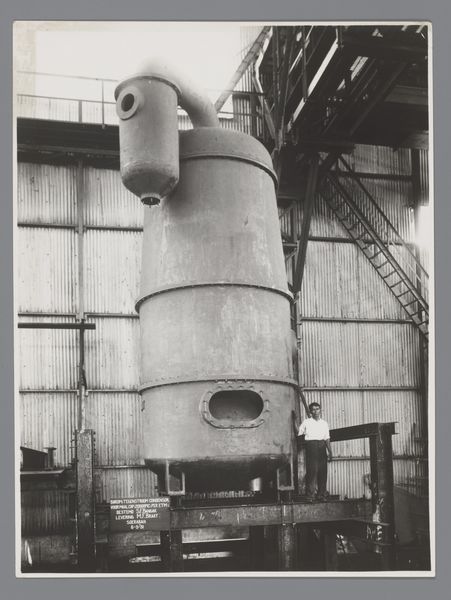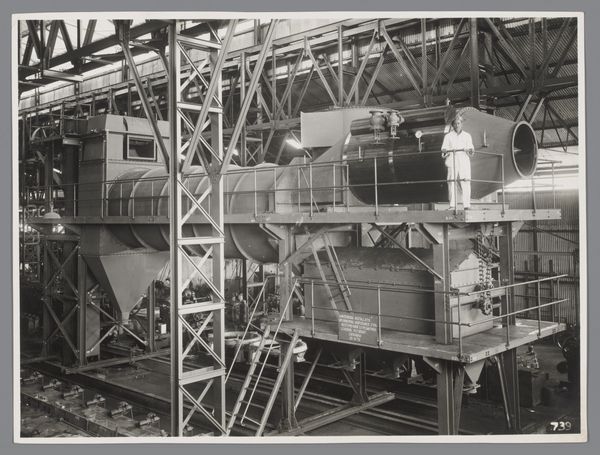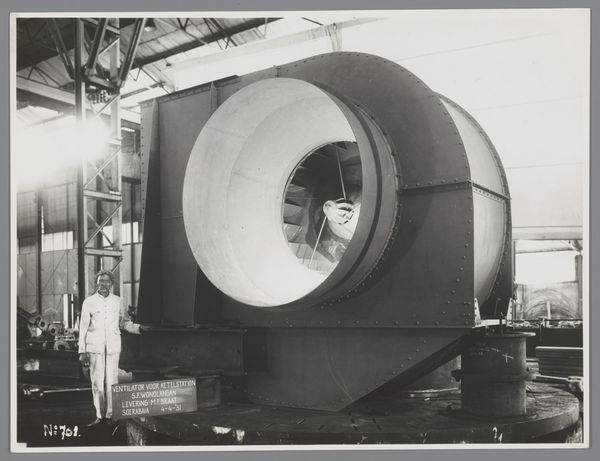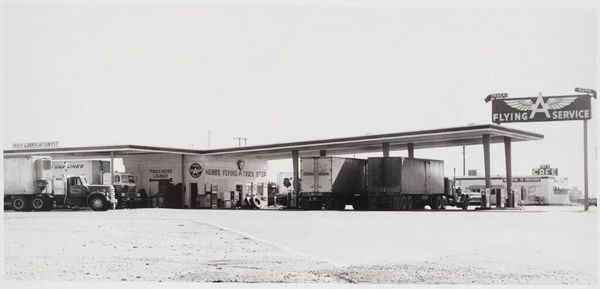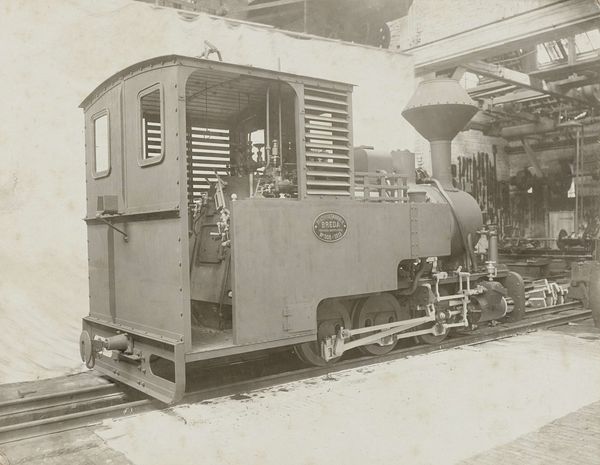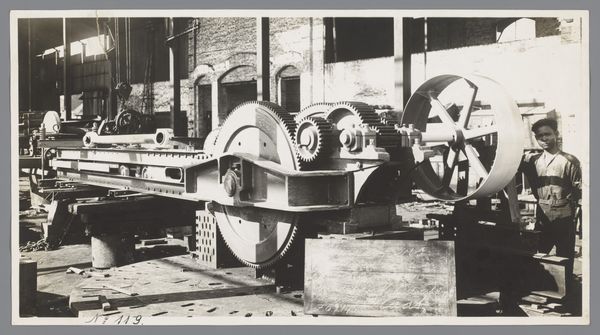
photography
#
conceptual-art
#
photography
#
cityscape
Dimensions: height 152 mm, width 202 mm
Copyright: Rijks Museum: Open Domain
Curator: Here we have a photograph titled "Bus, gemaakt voor de film The big bus" by Keystone Press Agency, dating from before 1976. It’s part of the Rijksmuseum collection. My immediate reaction is—what a behemoth! Editor: Exactly. The scale is striking. You can almost feel the weight of that machine just looking at it. What a marvelous concentration of materiality on tires. Curator: It certainly challenges our notions of public transport, doesn’t it? It appears to be conceptual art, bordering on satire, questioning our reliance on ever-larger, more extravagant technology. Consider how this image would have resonated during the oil crisis of the 70s. Editor: I am intrigued by the implied labor embedded in this construction. Look at the complexity of the engine, all those exhaust ports. Someone fabricated all of that by hand. This challenges the preciousness afforded painting or sculpture; this movie prop demands we consider all the labor invested to fabricate it. Curator: The photo's cityscape theme further emphasizes that commentary, juxtaposing the futuristic vehicle with its mundane, industrial setting. A factory is right next to this aspirational technology. How were urban environments being shaped to accommodate increasingly fantastical transport systems? Editor: The wheels literally keep turning—consider Goodyear and other such corporate logos branded within our collective vision for the future of travel? It underscores how mass-produced materials shaped these very particular aspirational and fantastical design tropes. Curator: Absolutely, it's a fascinating exploration of technological hubris within urban space. Seeing it displayed in the Rijksmuseum encourages a reconsideration of transportation history—what did progress mean in this specific period? Editor: Ultimately, looking closer reveals that material reality of imagined futures. Next time you see a film prop in passing—consider how its construction demands an army of workers bringing fantasy into dimensional life. Curator: Indeed. And how that constructed image speaks to very real concerns about the future of our cities. Editor: Yes—fantasy itself is formed of base materials, and collective labor.
Comments
No comments
Be the first to comment and join the conversation on the ultimate creative platform.
